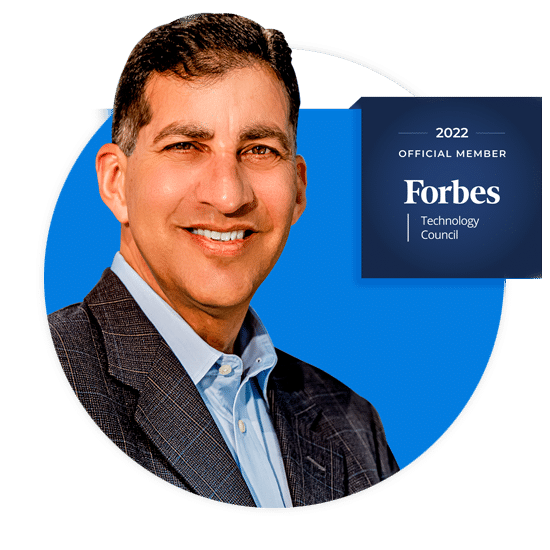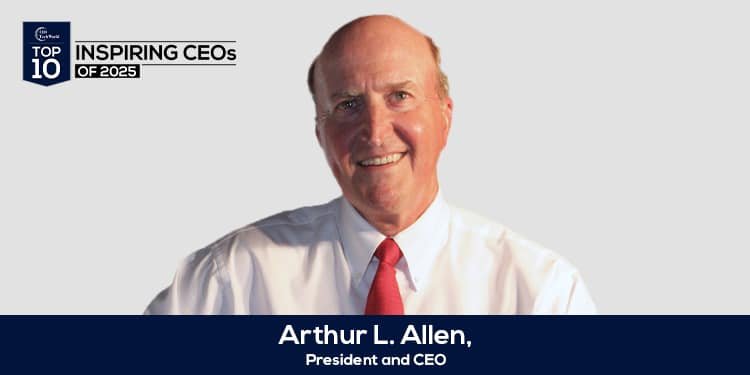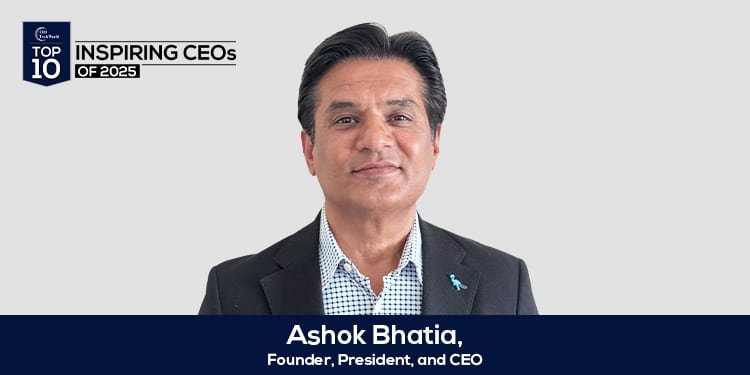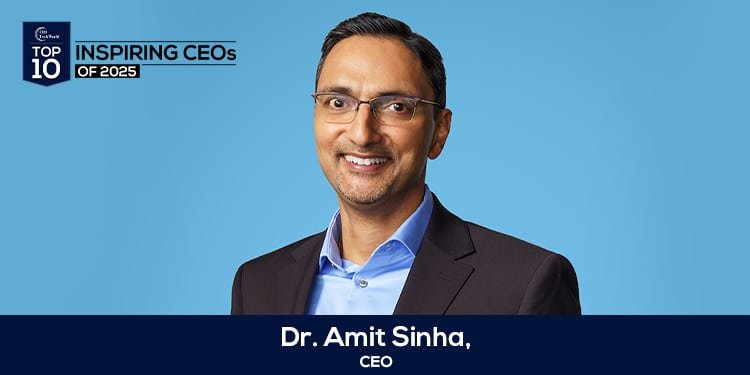From a young age, one thing remained abundantly clear to Satpreet Singh: an individual’s mere identity isn’t what leaves an imprint in people’s memories; it’s the positive attributes you possess—traits like being hardworking, intelligent, accomplished, and innovative. On the flip side, negative traits like not being a high achiever can also define a person in the minds of others. This understanding drove Satpreet not only to give his best to whatever responsibilities he was bestowed with but also to continuously strive to find ways to deliver even more. He would often work on enhancing his skills while performing his job. When confronted with situations where he could have easily excused himself with an “I don’t know,” he chose to say, “Let me find out.”
These positive attributes set him apart, making him more than just another face in the crowd. He became a dependable figure upon whom employers could count on. Furthermore, these traits acted as a magnet, attracting senior executives who recognized his potential and were eager to mentor him. This not only elevated his career but also swiftly opened doors to positions of higher responsibility. It was this very quality that propelled his journey—from providing support at MindSpring, an internet service provider, to assuming the prestigious role of CIO at Aflac, a Fortune 500 healthcare payer company. I am positive that Satpreet’s story will serve as inspiration for many as they make their way up the CXO ladder.
Describe your career progression from the start to where you are and what pivotal decisions, moves you made, circumstances, and other facts that facilitated your growth.
When reflecting on my time in high school in Kansas, two significant thoughts arise. Being the only Sikh student wearing a turban, I faced my share of teasing and name-calling. However, this unique identity led to a profound realization: though many might not recall my name, they would remember me. If they associated me with positive attributes like being hardworking, intelligent, accomplished, and innovative, then that would become my identity to them. Conversely, the same would be true if I were linked with negative characteristics, such as not being a high achiever. My identity exerted a considerable influence, but I understood that it wasn’t the words that defined me; it was my work and contributions. Despite any ridicule, I knew that my performance would eventually be recognized, and that would be what I would truly be associated with.
When I was attending Pennsylvania State University, I got a job at MindSpring, which was an internet service provider. My role was to provide support to accounts that were having issues with accessing the internet, and this was my first technology-oriented job. While working there I became curious about web hosting, which was an offering of MindSpring. I quickly completed all the training required and transitioned to the web hosting support role. I remember working nights and during low call times, I would read and practice HTML and PHP. I built my first website and even partnered with a friend of mine to start an online CD store. As I gained this experience, I applied for a Systems Analyst role after the company was acquired by EarthLink. I didn’t know what all it entailed, but I knew that I had enough development skills to at least give it a shot. Well, I got the job. My new manager at the time, Steve Semick, was one of the nicest people I’ve met and he supported and encouraged my learning. I’m sure I frustrated him at times, well maybe many times, but he gave me room to grow and showed me the ropes. The technology being used was new to me, it was called Progress 4GL back then, but it’s changed to OpenEdge now. Not knowing the technology but then being able to contribute relatively quickly to projects, boosted my confidence in pursuing an engineering career. I learned about database technology, design concepts, and architectural patterns at a relatively early stage in my career.
After 3 years in the Analyst role, I applied for a PHP web developer role at HealthPlan Service located in Tampa, Florida that I thought would be fun since I would live in warmer temperatures than what I had in Pennsylvania. I remember my hiring manager, Larry Bloom, and I had one phone call, and 15 minutes into the call it felt like in his mind he already made the offer, I had accepted and we were just chatting until I had to stop and ask him if I got the job and he confirmed. Two weeks later, I packed my car up with all my stuff and moved down to Tampa, where I knew no one. Being on my own for the first time, I used to spend a lot of time trying to figure out daily chores but also learning the ins and outs of what the company that I joined did. After being on the job for six months, I got promoted to a team lead and the promotion rocket took off. After about a year as a lead, I was given the opportunity to be responsible for all the technology needs of a specific client. This experience of running in a matrix environment helped me hone my interpersonal skills to bring teams together to help solve the client’s technology issues. I often didn’t know the answer, but I learned early on that it helped no one to just stop at “I don’t know”, but always to end with “But let me find out”. This helped build trust and authenticity in interactions with me.
A couple of years later, I was promoted to a Director role and was responsible for delivery for all of our clients. Learning to navigate local and offshore teams while giving opportunities for others to continue their growth were important learnings for me during this role. I started to build better relationships with business and project/program management resources. This helped ensure that a partnership was formed with initiatives that were prioritized. A couple of years later, I was promoted to the VP of Product Development role where I not only had execution responsibility but started to gain additional responsibility in defining the strategy for the technology organization. I gained broader exposure to vendors and partners that we worked with and built relationships and engagements that would be mutually beneficial. Managing a budget and balancing the current needs with what is needed for the future was much more evident in this role. I was fortunate enough to be part of the M&A process and the integration efforts when HealthPlan Services was bought by Wipro. This exposure helped me understand a large corporate structure. The politics, the governance, and the engagement model were different. I learned that context settings were much more relevant and critical as the organization expanded and so I learned new skills of being able to consider my audience much more when engaging them in topics – whether it was providing a business case for a new initiative, updates on how the technology team was adding value and what innovative initiatives we were working on. I gained a reputation as an innovator within the organization and with the support of the CIO at the time, Sri Akula, who really believed in me, I was asked to establish and lead the Research and Strategic Innovation department for the company. This helped me gain exposure to industry leaders and we started to build a culture of experimentation that promoted fast-failures on sound ideas. Another year or so later, and with the guidance of Syam Adusumilli, who subsequently became a mentor, I was asked to run not only the entire engineering department but also to grow the revenue of the organization by establishing a Professional Services P&L center. This helped broaden my engagement with clients, new and existing, to expand our offerings and ensure that they were delighted with the products and services that we were offering. I learned that not every day is going to be motherhood and apple pie, but how you interact and engage with people – internal or external, matters most. My brand mattered more.
These experiences across every aspect of technology and beyond led me to my CIO role at Aflac. I was able to leverage a network of resources to not only take on and execute one of the most ambitious transformation initiatives in the industry but also utilize my experience to ensure alignment across the organization on what transformations really are – organization-wide changes. I recall many conversations with my leader at the time, Diana Steinhoff, who has not only been a great mentor but a huge supporter of the transformation work being executed, about the organizational change needed for successful transformations. With her help, my brand and reputation grew quickly in Aflac and I was fortunate enough to engage with the C-Suite regularly and presented to several boards internally to ensure awareness and strategic alignment on the initiatives we had going at Aflac Benefits Solutions.
I’ve been blessed in my journey so far. I’ve had a lot of help from countless people who have shaped me into who I am today. Sometimes they did it intentionally, sometimes they didn’t even realize how they were teaching me. This support came not only from my professional network but also from my personal network for which I will always be grateful.
What are the key skills and qualifications that aspiring tech executives in the tech industry should focus on developing to enhance their career prospects?
First and foremost, it’s important to have a deep understanding of technology. This depth gives leaders the respect of their teams but also gives other leaders and peers the confidence to know you can deliver on what you’re committing to. This trust is important and will be a foundation from which your additional skills and qualifications will be amplified. Next, it’s important for an aspiring tech executive to be a strategic thinker. The level of breadth of thinking required for these two attributes is generally the most difficult to learn as technology knowledge sometimes can hinder strategic thinking. However, becoming proficient in doing so leads to a critical ability to develop audience-specific communication skills that allow you to tap into technology details when talking to engineering team members or link the technology application to the business objectives when discussing strategy with other business leaders. Being able to communicate well is also important as you’ll need leadership and people management skills to help drive the organization forward. Understanding the business and the financial acumen needed to relate the value the technology organization brings is imperative for tech executives. You want to make sure that the technology budget is viewed as an investment and not just a cost center. Project management, risk management, and change management are important skills to deliver and deliver well. Without these in your toolkit, you don’t build a reputation as someone who can make things happen. Finally, innovation and creativity are important skills that help the leadership, your peers, and your teams get inspired to think bigger and be bolder in what the collective can do together.
What are some key milestones or achievements that tech executives should aim for at various stages of their career to demonstrate their growth and readiness for higher-level roles?
Early on in a career, especially for the first 3-5 years, the focus ought to be the details – getting things done, learning the technology hands-on, and engaging with team members in the details of technology implementation. This includes getting a really good handle on executing, which needs to continue into the next 3-5 years when one should look beyond their own teams to build relationships and exert influence. Start to gain a deeper understanding of the business and what matters, how the organization makes money, and then push for initiatives that innovate and expand the value of the organization. The next 3-5 years become important to not only understand the other areas of a business beyond technology but also play a heavy role in driving change across the organization. Look for opportunities to engage with the C-Suite of leadership, ask for time, or ask how you can help and bring value to them or their areas of responsibility. In the next 3-5 years one would do well to look beyond the core organization and define a vision that has a broader impact in the industry. Every phase builds upon the previous and though the level of detail may be reduced, the ability to cover the breadth of information from the lowest level of detail and tie it to the vision as an Executive are key building blocks in career growth.
How important is it for tech executives to actively seek out mentorship or coaching opportunities to advance their careers? What benefits can they derive from such relationships?
Mentorship and coaching are not just career advancement tools, they allow for personal growth as a person. The reality is, who you are is a reflection of how you work and vice versa. Mentorship and coaching help you focus on what matters because it is easy to get sucked into the minutiae of the day-to-day. Having someone who can provide mentorship helps your career progression. A coach will help you navigate through issues and suggestions that you can take advantage of based on another person’s experience. Most mentors and coaches are interested in your success. That’s a powerful driver of confidence in helping you take the next leap, even when you might be unsure of what to do. This also applies to being a mentor and coach to someone else. The flipped perspective also gives you an opportunity to help someone else and engage in problem-solving with them together – that in and of itself is shared learning and growth.
In your experience, what role does professional networking play in the career progression of tech executives? How can tech executives effectively build and leverage their networks?
Professional networking is critical in career progression. The reality is that most (80-85%) of senior leadership roles are filled via networking. According to a survey by LinkedIn, 70% of professionals hired in 2016 had a connection at their company. A study by the Harvard Business Review found that 80% of senior executives were hired through networking. A survey by the National Association of Colleges and Employers found that 60% of employers use networking to identify potential candidates for senior leadership roles.
It’s not uncommon that individuals with technology are generally introverts, but networking is a skill that can be learned and it’s a key tool that tech executives need to leverage. For their own growth, to help influence organizations, and to help come up with ideas and solutions that change industries. Start with engaging with those who likely have similar roles or responsibilities. This gives an avenue to share learnings and slowly builds a level of comfort to engage with others who are a little distant in their grasp of technology.
Are there any specific certifications, advanced degrees, or executive education programs that can significantly enhance the career prospects of tech executives in the tech industry? Which ones would you recommend?
My personal experience is that early on in a career, getting certifications and degrees carries a lot more weight than as a leader grows in their career. Having said that, there are two programs offered by SIM that are leadership programs that can be described as life-changing. The first is the Regional Leadership Forum and the second that builds upon the first is the Executive Regional Leadership Forum. Both of these are excellent programs that pay in spades for the learning gained, not only for the individual but also for the company the individual works for. In addition to the learning, you gain a huge network and get to interact with well-accomplished executives, like June Drewry, who continue to play a role in not only my growth but also of so many other up-and-coming leaders.
Can you share any examples of notable tech executives who have successfully transitioned from one role (e.g., CIO) to another (e.g., CEO) within the same organization or industry? What factors contributed to their success?
Some of the more notable ones in the industry are Satya Nadella who transitioned from his role as EVP of Microsoft’s Cloud and Enterprise group to the CEO of Microsoft. Another notable transition is that of Sundar Pichai who was responsible for Chrome and the Apps division and now is the CEO of Alphabet. There are many such transitions and as industries realize how critical technology is to their existence, let alone growth, more executives that are tech-savvy will take the helm and lead organizations to greatness. Some of the factors that contributed to these success stories are – knowing your stuff, understanding the business, having a reputation for execution success, defining a vision worthy of following, and inspiring a workforce to make your vision a reality.
How important is it for tech executives to cultivate a personal brand and establish thought leadership within the industry? What are some effective ways for tech executives to showcase their expertise and gain visibility?
In today’s day and age, more than ever, it’s critical to build a personal brand and establish yourself as a thought leader. Organizations form an opinion of someone and what value they could bring to their organization before even getting a chance to engage with the individual. Utilizing social media platforms like LinkedIn is critical for professionals, speaking engagements at conferences or webinars are important as they get your name and face in front of industry experts, so utilizing those platforms to get your brand out there is very important. In addition to the social media platforms, it also helps to have a dedicated space where you can share your ideas via a blog. I’ve been quite successful in doing so at my own website, satpreet.com where I have been able to get some meaningful engagement which resulted in consultation requests. You have to decide what you want to be associated with and then really dig into those concepts and share those thoughts wherever you can.
Lastly, what advice would you give to aspiring tech executives who are looking to accelerate their career progression and make a lasting impact in the tech industry?
Keep learning. Build a strong network and engage with people whom you can help and who can help you. Be a thought leader. Have opinions that take into account not just a pure technology view, but a business perspective, a user perspective, and a financial perspective. Tech executives have to be comfortable with being innovative. The ideas don’t have to be unicorns, but change is not something you get comfortable with, change is what you drive. Take on initiatives that may be a little outside your comfort zone, you’ll learn along the way and you’ll gain the trust of being genuine when you may not have all the answers but are willing to keep at it. Take care of your support system, whether that’s at home, mentors, coaches, etc. They are your biggest fans, don’t forget about taking care of them too. Lastly, have fun! Find joy in what you do.

As a visionary Business and Technology Leader, I bring a proven track record of driving innovation, fostering collaboration, and delivering exceptional results in fast-paced and dynamic environments. I have honed outstanding skills in articulating a compelling vision and rallying active support from internal executives, development teams, and client business and IT leadership. I am proud to be a member of both the Forbes Technology Council and HITEC (Hispanic Technology Executives Council), which underscores my commitment to being at the forefront of industry trends and developments.
My special talent is demonstrating value to clients at all touch points – I instill these concepts in my teams.








